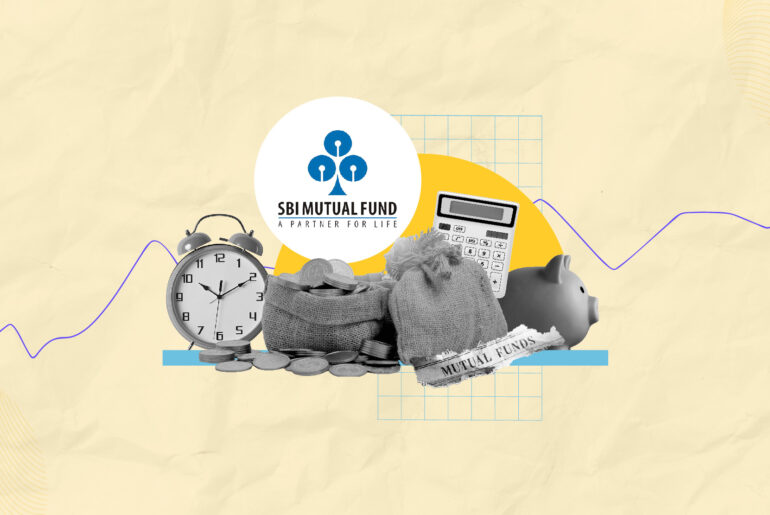Last Updated on May 3, 2021 by Aradhana Gotur
Raising a child is expensive but worth every drop of sweat and penny you put in to ensure they have the best of everything including education, healthcare, and a secure future. However, nothing comes easy and free. You need to plan rigorously and invest well in advance to give them the best.
While there are many avenues available in the market, the following are 5 long-term investments for your child that you can consider to secure their future.
This article covers:
- Sukanya Samriddhi Yojana
- Post office term deposits
- National savings certificate
- Debt and equity funds
- Exchange-traded funds
- Related FAQs
Table of Contents
Sukanya Samriddhi Yojana
Short for Sukanya Samriddhi Yojana, SSY is a Post Office Savings Scheme backed by the government. As the name suggests, Sukanya Samriddhi Yojana is specifically designed for a girl child. You can open an SSY account till your girl child turns 10 yrs, and you can deposit in it till she attains 14 yrs of age. An SSY account matures 21 yrs from the account opening date however, you are allowed to make partial withdrawals after your child turns 18.
Currently, SSY offers interest at 7.6% p.a., which is compounded annually. This makes for an excellent investment for your child as it requires a minimum deposit of just Rs 1,000 in a year. The maximum allowed is Rs 1.5 lakh. SSY is also attractive tax-wise due to its exempt-exempt-exempt (EEE) status. Note that as parents and guardians, you can only open 1 account for a girl child and have a maximum of 2 SSY accounts.
Post office term deposits
Similar to fixed deposits, Post office term deposits (POTD) are one of the best investment options for your child. As the name suggests, this Post Office Savings Scheme is offered by India Post and post offices across the country. Although a POTD is available in 4 tenor options: 1 yr, 2 yrs, 3 yrs, and 5 yrs. Only the 5-yr term deposit offers tax benefits under Section 80C.
The interest rate on Post office term deposits is revised quarterly but once you open an account, it will gain interest at the rate prevailing during the quarter of investment. Currently, the 1 yr, 2 yr, and 3 yr term deposit earn interest at 5.5% and the 5 yr scheme at 6.7%. An advantage of the scheme is that you don’t need to have a lump sum to start investing. You can do so with just Rs 200 with no maximum limit. Moreover, your minor child can also open POTD in his/ her name.
National savings certificate
National Savings Certificate (NSC) is another post office savings scheme offered by India Post. You can invest in this certificate in your minor’s name. While the interest is subject to periodic changes by the Ministry of Finance, the NSC interest rate for Q4FY 2020-21 is 6.8% p.a. What makes NSC a lucrative investment for a child is that the interest is reinvested. Thanks to this and a lock-in period of 5 yrs, you can garner a handsome maturity amount for your child.
NSC is also a tax-friendly long-term investment plan as both principal and interest are eligible for a tax deduction under Section 80C—except that the 5th yr interest is taxable. The minimum deposit required for a national savings certificate is Rs 100 with no maximum limit. What’s more, you can also avail a loan against NSC during times of need.
Debt and equity funds
If you wish to power your investment for a child with the goodness of capital market instruments, then consider investing in mutual funds. These investments park funds in various instruments such as equity, debt or a mix of both, which diversifies the risk. There are various types of mutual funds that you can choose from based on your objective, investment horizon, risk appetite, and expected returns. For instance, an equity fund has a high exposure to stocks, which makes it relatively risky.
However, these funds also offer higher returns compared to debt funds, which are comparatively less risky. If you want to enjoy the best of both, consider investing in hybrid funds—a mix of equity and debt. When analysing this investment for a child, use Tickertape’s Mutual Fund Pages to make smart investment decisions.
Exchange-traded funds
Exchange-traded funds (ETF) is similar to a mutual fund. However, an ETF is traded on stock exchanges and closely matches the constituents of an index. Such funds, which are called passively-managed ETFs, are expected to offer returns more or less at par with those of the index that follows.
However, returns in the case of actively-managed ETFs are not at par with any index as they don’t follow one. Such ETFs too are listed on bourses but are managed by a professional, who looks to reduce risk and optimise returns. The right ETF can grow your funds manifold and be a good investment for your child. So, start today by reading this checklist to pick the best ETF for your portfolio and then use Tickertape’s ETF Pages to analyse the fund and make informed investment decisions.
When investing for your child, every second and penny counts. One tip is to invest in more than one of the above plans in order to accumulate a generous corpus for your child. Remember, being smart is putting your eggs in not one but several baskets. Only then you can diversify risks and optimise returns.
Related FAQs
When should you start investing for your child?
As soon as you can. With expenses skyrocketing, the best time to invest for your child was yesterday. Meaning, the ideal time to start investing for your child is even before its birth. But if you’ve come to realise it late, fret not. Start today. Because investing sooner than later helps you capitalise on compounding benefits.
How long should you invest for your child?
Well, this depends on the objective of investment and the time you wish to start. For instance, if you want to invest for your child’s education and are looking to start in its infancy stage, consider investing for the long-term. This way, you benefit from a long-term investment horizon, which can grow your money manifold. You can also assume higher risk and take advantage of stocks, ETFs, and mutual funds that are relatively riskier than fixed-income instruments such as fixed deposits but offer higher returns as well.
- List of Top Performing Index Funds in India (2025) - Apr 25, 2025
- Gilt Funds in India for 2025 – Meaning, Taxation, and More - Apr 21, 2025
- Alternative Investment Fund (AIF): Meaning and Category of Various AIFs - Apr 21, 2025




